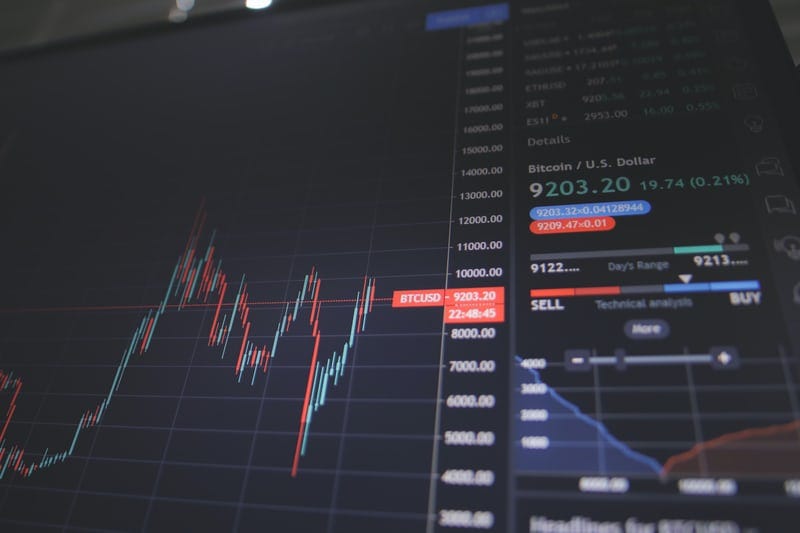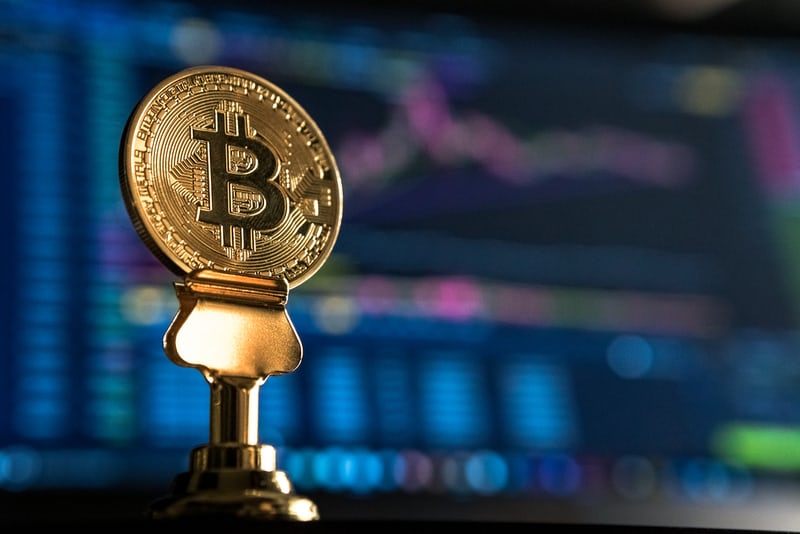As females, we are naturally more risk-averse than males and tend to shy away from speculative investments that have no justification for their price.
Fortunately, our conservatism through passive investing comes in handy since it ends up returning us more in the long-run.
Although men make up 90% of portfolio managers in the world since they landed a head start in the financial world and in the workforce in general, even trained professionals haven’t historically outperformed females’ portfolios.
I’m convinced the reason is due to the fact that women don’t track performance nor make it a competition since after all that would defeat the whole purpose of why they are prudent investors. They don’t treat it like a gambling game!
Since 2003, fixed-income funds run exclusively by women experienced a cumulative return of 4.23%, or 0.32% annualized, higher than the average fund’s return in the category. Most of these gains came during the financial crisis and in the past three years. During the worst times, men make more moves in their trades when in reality, buying and holding is your best bet.
According to Terrance Odean, a professor at the University of California, Berkeley, men trade about 45% more than women, which reduces their net returns by 2.65 percentage points a year. Out of those investments, what drags them down are large holdings of cryptocurrency, options/derivates, commodities and barely any liquid assets in sight.
Why is this so?
Passive investing historically beats out active investing despite never having the intention to beat out the markets, rather just track/mirror the major indexes’ gains. As a result, women are 36% more likely to oversee passive funds which are seen as long-term performers with less work and fees such as ETFs and or index funds.
Though, to save you some time here are some quick facts:
-Female investors earn better returns than men — up to 1%
-Less than 5% of women take more risk titan they should
-Women stay the course and rebalance less
-Women earn 20% less yet have higher savings and retirement participation rates than men
Despite the staggering cumulative $1.5 lifetime earnings gap between men and women at retirement and females only earning up to $0.80 for every dollar a male earns, her steady returns and cautious work benefit tremendously in the long run.
So why do I present all of this?
No, it’s not a cat fight. For the men reading this, keep doing what you are doing, yet you can learn a thing or two from us especially within the alternative investments space.
Granted since women live longer they need to have a sturdier backup plan that works in any correction or recession.

Back Door
Who are alternative investments for?
Alternative investments, hence the name, are not directly correlated to the market. They have their own ‘market’. For example Bitcoin, dogecoin and stablecoin, the hot crypto currencies these days, none have an IRR (internal rate of return) nor intrinsic value based on an underlying asset such as a derivative which derives its value from an indicator such as interest rates, inflation, currency, etc. Their value is all based on investor sentiment and emotions, the number one thing you want to rule out when investing.
In addition, alternatives are usually not regulated by any intermediary such as the Fed, SEC, bank or central government which makes them extremely volatile, speculative and dangerous unable to predict the next price hike or downfall. Yet, they do come with a juicy return if one gets lucky since after all, more risk = more return or the complete opposite.
Although investing shouldn’t be considered a game, according to my male investors they still treat it like it is one and the rise of retail trading platforms from Robinhood to WeBull have accentuated this euphoria encouraging margin lending, taking on leverage, getting into debt to place trades in unprofitable stocks a.k.a AMC, GameStop and BlackBerry and placing bets on securities they are too young to know about.
Commodities, raw materials or agriculture products that can be bought or sold through future or forward exchanges, not equity securities, are typically exchanged on OTC (over the counter) on the NASDAQ electronic exchange not monitored by the SEC on the secondary exchanges as the main indexes include the DOW and S&P 500.
OTC follows a similar fashion to a dark web or dark pool of high-frequency traders which can shock markets due to high volatility and large transaction volume behind the scenes. Commodities are sensitive to inflation and although offer diversification and good yield, are volatile and subject to foreign and market risk, something male investors are 20x more likely to get into.
Or take farmland, wine, real estate, artwork, collectibles and most notably NFTs (non fungible-tokens-crypto based one-of-a- digital assets). These are all alternative investments that are less volatile, some not as costly as others, fun to dig into and can add diversification and less risk, all approved by women.
Alternative investments should be considered as a sideline investment after allocating at least 30–40% of your net worth in the regular markets. Although majority of accredited investors invest more of their wealth in the markets due to an abundance of income streams, cash cushion and thriving businesses, starting out, I would make sure you have enough capital and cash flow to support yourself then rely more heavily on the markets.
Securities and fixed-income are boiling these days with their lofty valuations and getting more expensive by the minute which has lead to an influx in alternative investments. Occasionally I walk past Christie’s auction house on 49th and Park in the city to see new posting for the day. Usually a waiting list is outside of the main entrance and illustrates what piece of art from a sculpture to painting is up for sale for the day along with its current highest bidding price.
Maybe one day I’ll be a buyer yet thankfully we can all get in on the action as well by investing in art stocks, creating our own or reselling a masterpiece we already collect. If there’s a will, there’s a way.
Alternative investments are alternative for a reason. They are scarce, lucrative, priceless investments and sacred. For the extra cost of a Picasso painting, an investor will have a piece of mind the art is practically guaranteed to appreciate as opposed to owning a frothy security like Tesla.

You and I
Luckily, if you don’t have the right amount of capital to pour into a physical tangible property at the moment, which may be a good idea anyway since the market is so frothy with low inventory and sky high prices, there are many other alternatives to real estate and alternatives, no pun intended, that don’t require $2m upfront or 60 referrals from your country club.
If you don’t want to deal with the upkeep of physical tangible real estate from renovation to maintenance, seeking tenants, setting up open-houses, property damage, security, insurance, you name it, sadly it all exists, investing in REITS (real estate investment trusts-investment funds manage U.S. properties) is a great way to diversify your portfolio. Although REITS are correlated to the market and usually require a lock-up period for your money, you’ll be more diversified investing in the mid-west and south instead of just staying local with your physical property up north. Crowdfunding is another bonus uncorrelated to the swings of the market.
For artwork, you don’t have to dish out $20m on a new piece for your living room. Just invest in companies that distribute, sell and compose art pieces on art indexes such as Sotheby’s (NYSE: BID) and Christie’s that sell art as investments that will often cite Art Market Research’s Art 100 Index to justify their staring bids. I’ve invested roughly 300 shares last spring into the Artprice 100 Index. They focus on blue chip artists, not companies this time and average holdings have grown at an annual rate of 8.9% from 2000 to 2017!
Similarly to getting rejected by a top company, if you can’t get in, better for you since you can instead invest in them and let the company work for you!

What’s In It For You
Alternative investments as with any investment have their pros and cons.
As a female, I follow the mantra: risk whatever you’re willing to loose and it has helped me overcome FOMO in crypto and speculative nonsense. Choose whatever you are comfortable with. There are a plethora of options. Farmland is much more stable than crypto and art may be too expensive than a few shares in Fundrise.
With Bill Gates being the largest independent shareholder of U.S. farmland, with his enormous wealth he is clearly investing in something right. Most people don’t realize that 80%+ of his wealth is from his investments outside of Microsoft. Agriculture stocks such as American Vanguard Corp, AVD or Deere & Co. (DE) that invest in equipment, forestry, construction, land, agriculture are great options to make your portfolio less bouncy than Bitcoin.
Keep It Or Loose It?
The reason crypto is so hot these days is because it’s unexpected and fun. Granted the stock market is unpredictable as well but Bitcoin is riding to the moon and falling back to earth every few weeks. Financial advisors these days don’t know how to react to clients’ questions if they should really invest in crypto. Accredited investors are more likely to have a stake in it sticking to small allocations nearing 1–2%.
In a recent survey of more than 500 financial advisers conducted by organizations including the Financial Planning Association, nearly half of advisers said clients have asked them about investing in cryptocurrencies, up from 17% in 2020. About 14% said they use or recommend it, compared with fewer than 1% last year.
Crypto is also scarce, something the rich crave. You can read here what I mean.
The more scarce something is, the more valuable it is.
People want possessions that are limited.
I believe crypto is a move that may still be considered. It’s not out of the playing field yet. The problem is that the longer I wait, the higher it’ll get. A few of my guy friends in college believe it’s fun, which scares me already. As a result, they’ve witnessed their portfolios flop since it takes up more than 10%.
Since it’s highly volatile, even adding a small amount required my friend to restructure his asset allocation which took days to repair and down the road lead to worse performance because more often than not, the more you tinker with your holdings, the less work it will do for you.
Is it that we are bored of fixed-income and equities and want to have fun investing again?
Maybe Robinhood or quarantine are to blame.
If you’re a prudent, rational, moderately conservative long-term investor, you wouldn’t get allured by Bitcoin’s unbelievable growth from 9k to 64k at its high in April over the past year.
Understanding what to block out and listen to is part of the battle. Stick with the long game.
Your wallet and mind will thank you later.
Happy mining.

